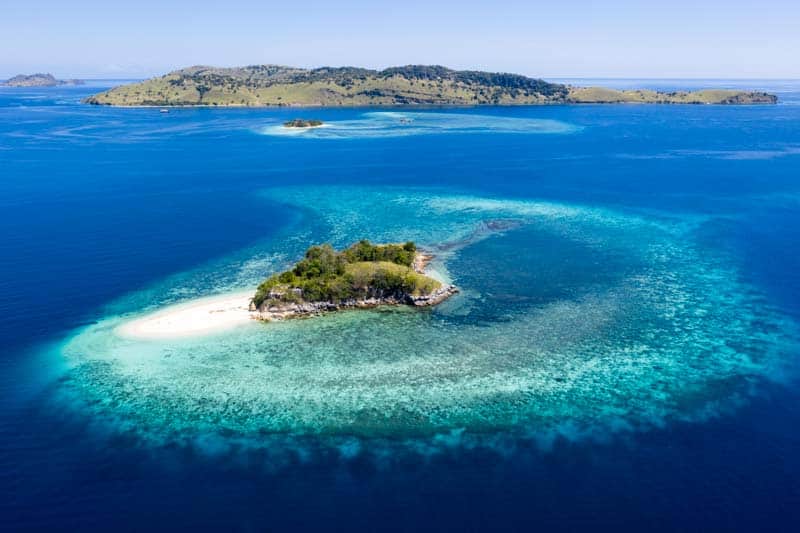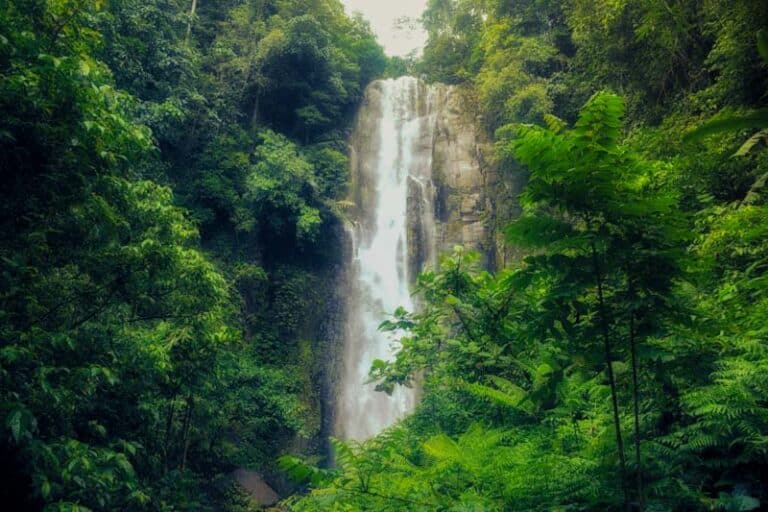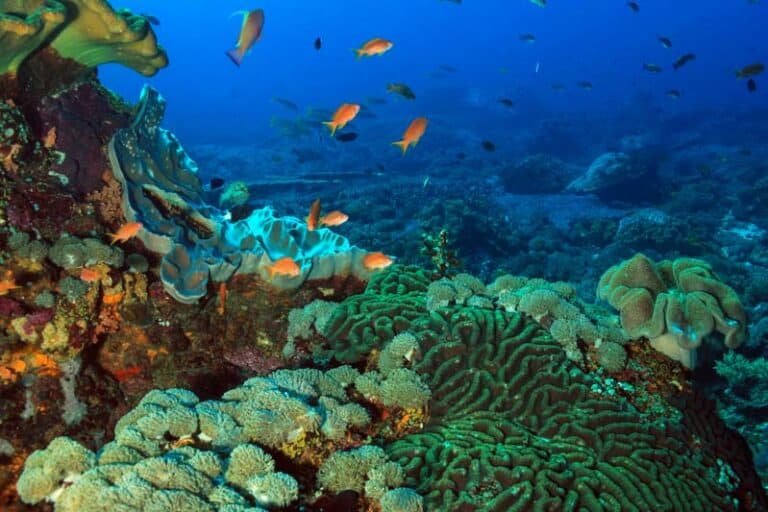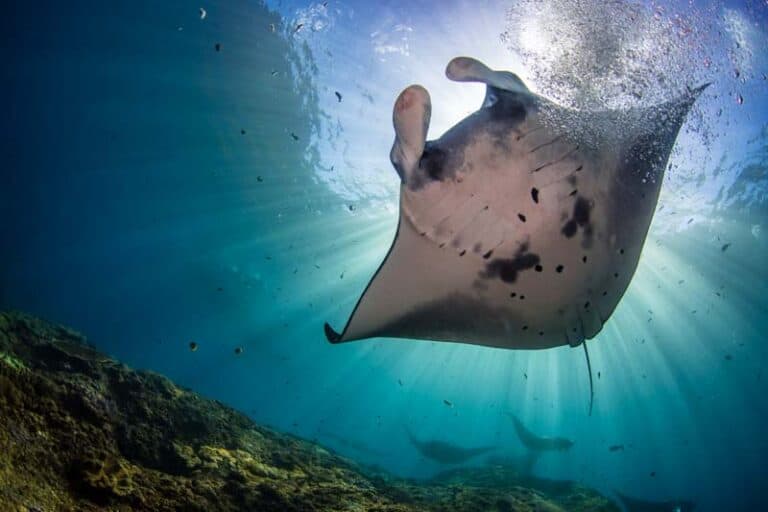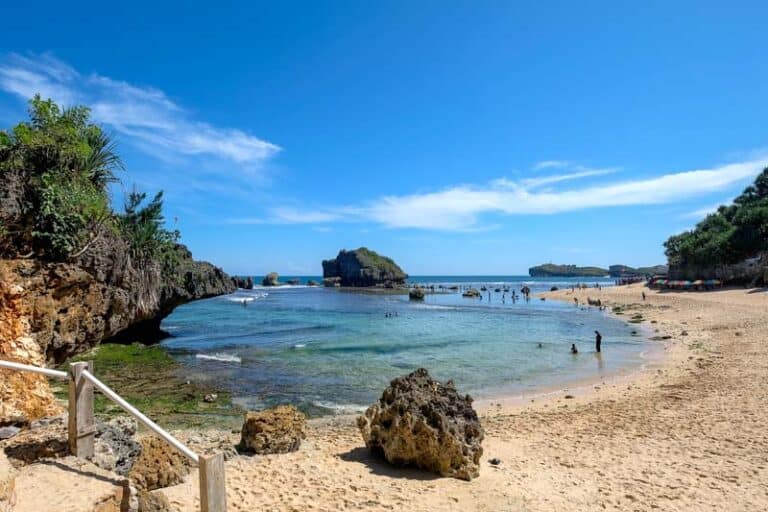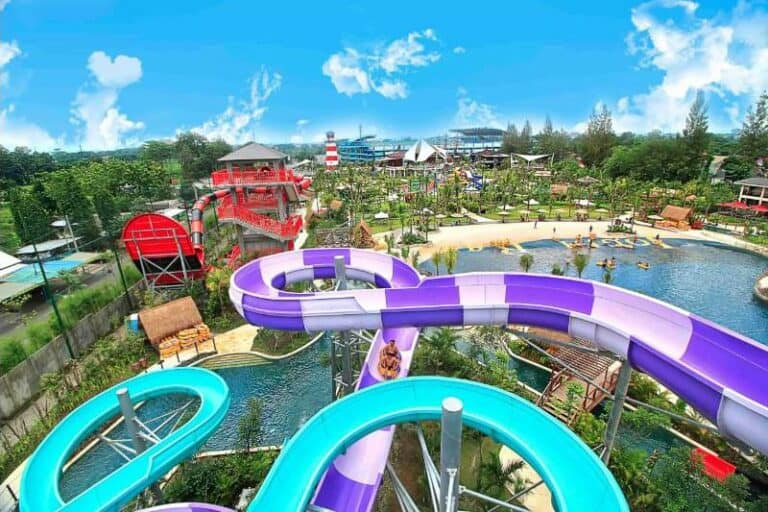As one of the most famous scuba diving destinations in the world, Komodo National Park becomes a bucket list for all divers. Located between the islands of Sumbawa and Flores, Komodo National Park covers three main islands of Komodo, Padar, and Rinca, with several smaller islands nearby. In 1991, it was listed by UNESCO as a World Heritage Site and was known as a home to hundreds of species of corals, fish, and other marine creatures – besides Komodo dragons.
With warm water temperature between 22 to 28 Celcius (68 to 82 Fahrenheit), Komodo National Park is right to dive mostly from April to October due to good weather. Please note that the current can be strong in some of the Komodo dive sites, so make sure to listen to your guide dive during the briefing. Although there are too many dive sites to mention, here are some of the top Komodo dive sites to explore during your dive trip, either you do a liveaboard or land-based trip.
Batu Bolong
Mentioned as one of the most famous Komodo dive sites, Batu Bolong (Hollow Rock) dive site is a tiny rock island with a hole in it lying between Komodo Island and Tatawa Island. Below, you can descend in the crystal clear water next to the rock to feel like you are in a huge aquarium, and see the giant rocky reefs dropping up to 70m, where all the reefs and corals are perfect and feature a sheer volume of fishes, such as, Napoleon wrasse, giant trevallies, and white tip sharks. On the shallower area, you can play with some huge schools of fishes but make sure to watch where you are heading to. The current can be strong, so staying close to the reef is the key, and this dive site is more recommended for advanced divers.
Castle Rock
Castle Rock is one of the most amazing Komodo dive sites, where there are several pinnacles points upwards from the deep of 24m (79 ft.) up to 4m (13 ft.) closer to the surface. Some say these huge pinnacles resemble the castle, where the site name comes from. Located in open water, this site can have a powerful current where the home for pelagic fishes like giant trevallies, reef sharks, jacks, mackerel, barracuda, and more. This site is located off north of Gili Lawa Laut Island, north of Komodo Island. A quick descent (negative entry) is crucial when the current is strong.
Manta Alley
Probably the most famous dive site in the Komodo area and, yes, you are very likely to find Manta Rays here. Located in the far south of Komodo Island, inside the bay, you see some rocky outcrops at the surface, while under the surface, you have an “alley” at a 10-15m (33-49 ft.) depth between the rocks and a more in-depth section to the east down to 30m (98 ft.). The site can easily be dived more than one time. You may also find other large rays, big parrot fish or barracuda here. There can be a strong current, and the water is often a little chilly at this dive site.
Manta Point (Taka Makassar)
On the northeast side of Komodo Island, you can find a flat channel where Manta rays come here to get cleaned. You can descend and wait on the bottom with coral rubble, till the Mantas or other larger fishes come to hang out with smaller fishes living there. You can also sometimes encounter the eagle rays, turtles, wrasse, or reef sharks. With the depth around 15m and mild current, this is one of the most well-known Komodo dive sites which is suitable for all level of divers.
Light House
This northern Komodo dive site features an excellent reef slope offering a gentle drift dive with some interesting rock outcrops. Not far from the Castle Rock and Crystal Rock Komodo dive sites, Light House light current will take you through a nice dive to see various creatures, such as, lobster, crabs, giant trevallies, napoleon wrasse, snappers, sharks, manta rays, some moray eels, and nudibranchs.
Shotgun or Cauldron
It is another classic Komodo dive sites where you will get one of the best diving experiences ever! Cauldron is the name of the bowl-shaped drop off along the eastern end of the site, which resembles the Spanish cauldron (large bowl). It is basically a drift diving with changing topography.
After the entry is done on the reef slope west of Gili Lawa Laut island, about 100 meters (328 ft.) north of the channel where the current is mild to non-existent, the water funnels through the passage between Gili Lawa Laut and Gili Lawa Darat and creates a very fast current for a few hundred meters. Closer to the exit from the cauldron, there is a small gap in the eastern side of the walls where the current will suck you into and shoot you vertically up over a large and rocky slope – the ride is very enjoyable when you do it right and control your buoyancy.
Sebayur Kecil
This is one of the relaxing Komodo dive sites where you can enjoy to see large variety of corals and marine life with very little or no current – relatively close to Labuan Bajo. Not far from the coastline, an excellent house reef with a charming coral garden will welcome you along a gently slope until the white sand bottom at around 19m. You can see the large cuttlefish, octopus, ghost pipefish, frogfish, leafy scorpionfish, and electric clams – just some of the many inhabitants of this area. Along the wall, you can enjoy many soft corals, divers can find many lobsters, crocodile fish, nudibranchs, and flatworms. With good visibility all year along, this is one of the Komodo dive sites suitable for all levels of divers.
